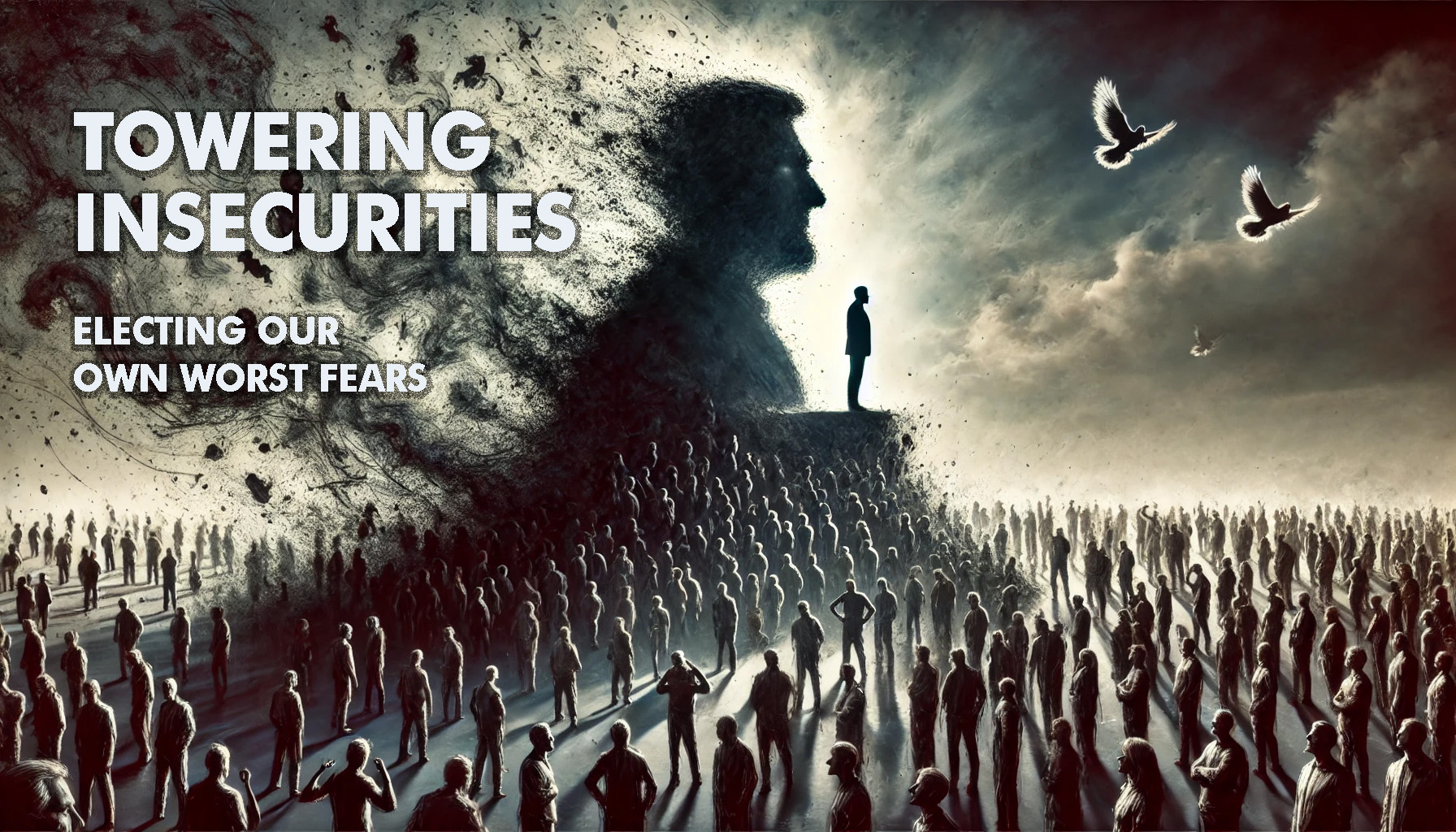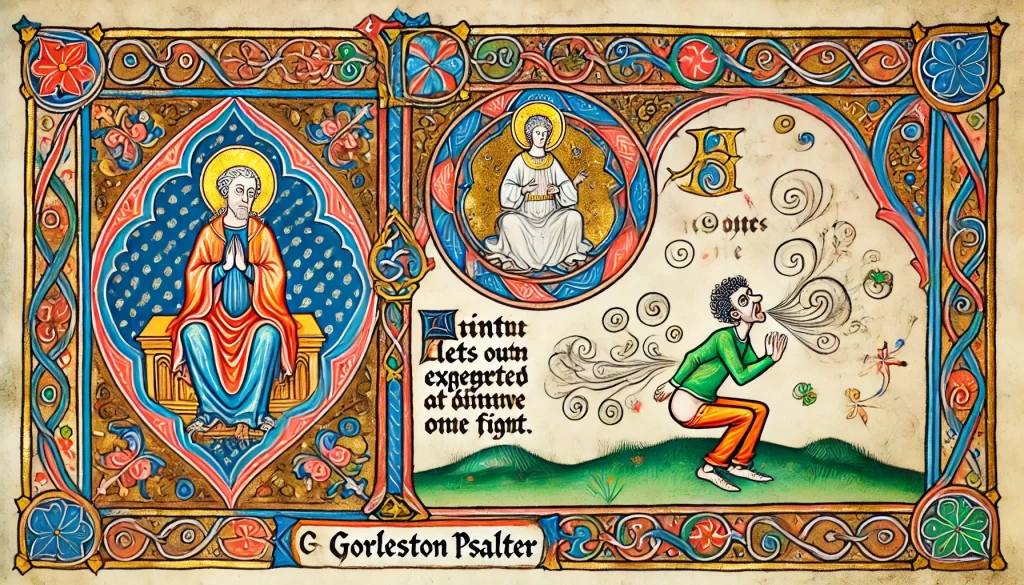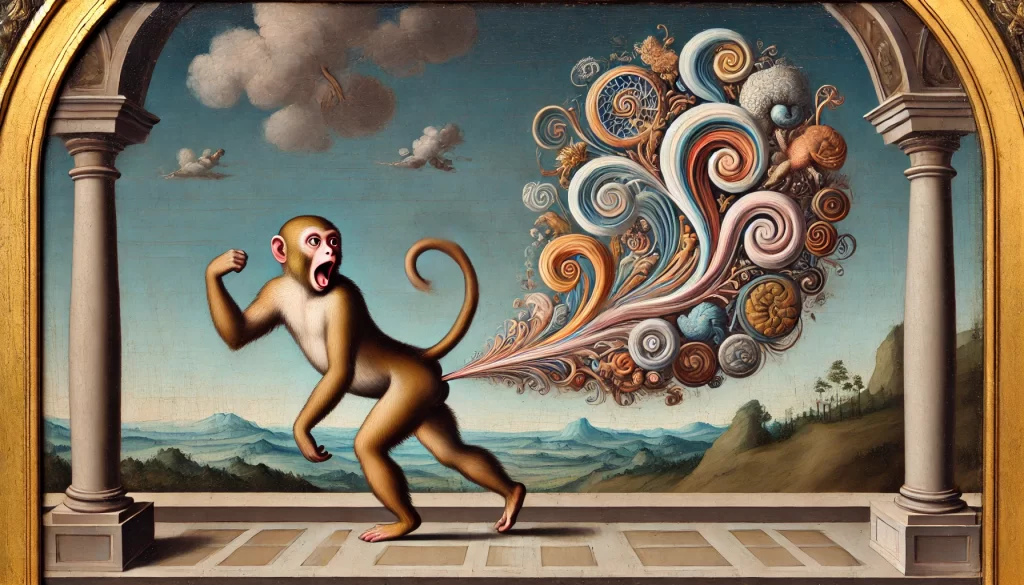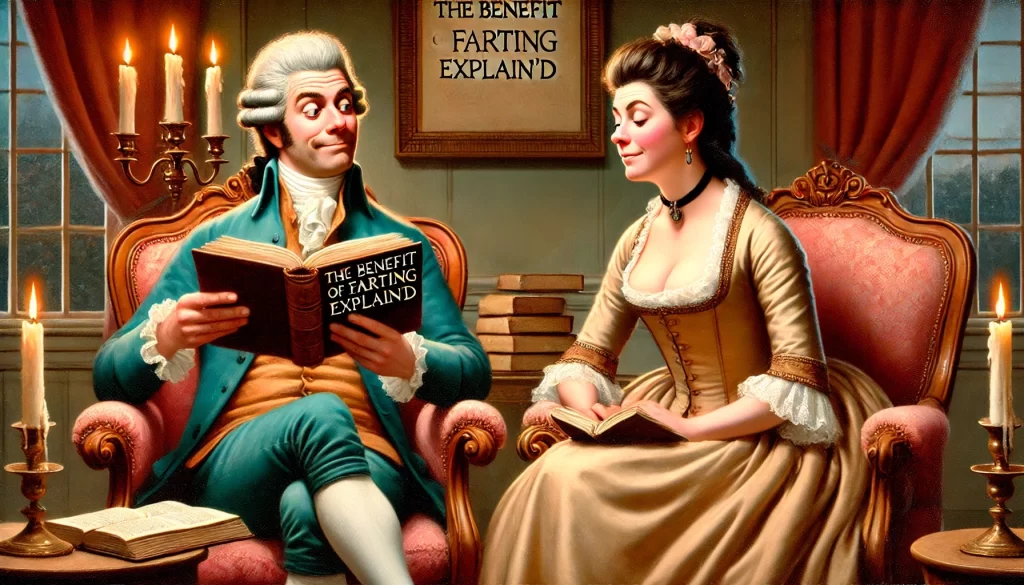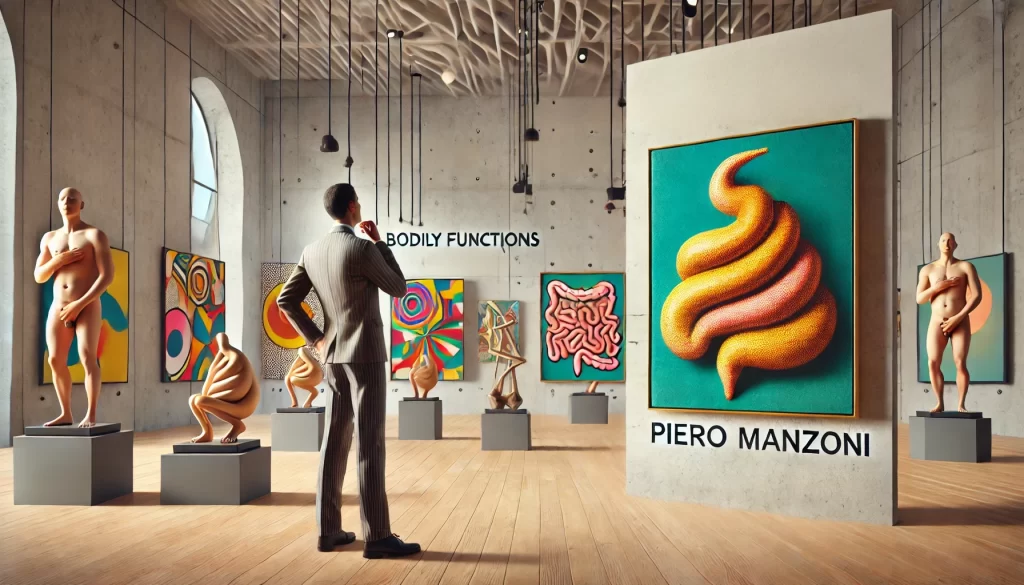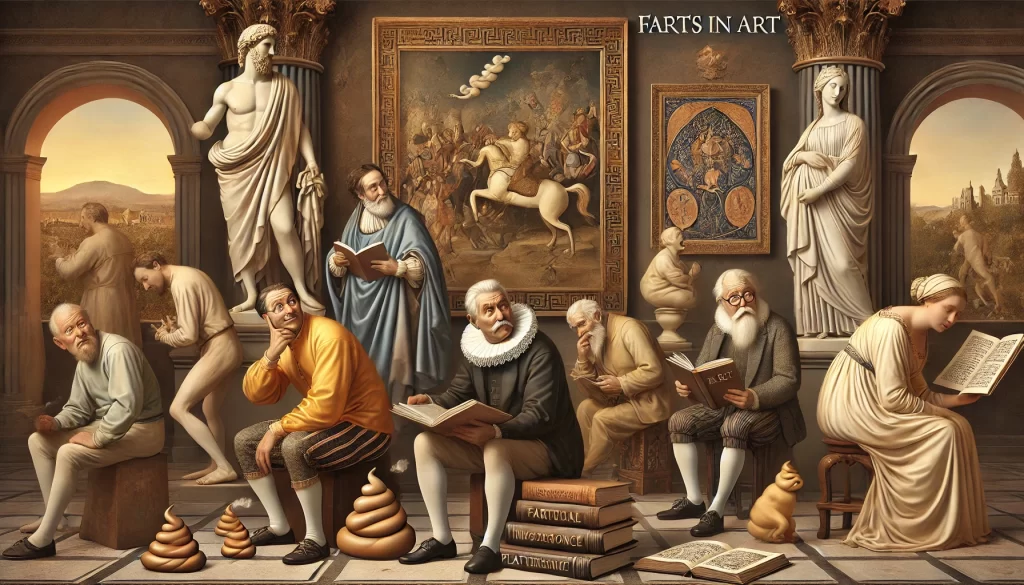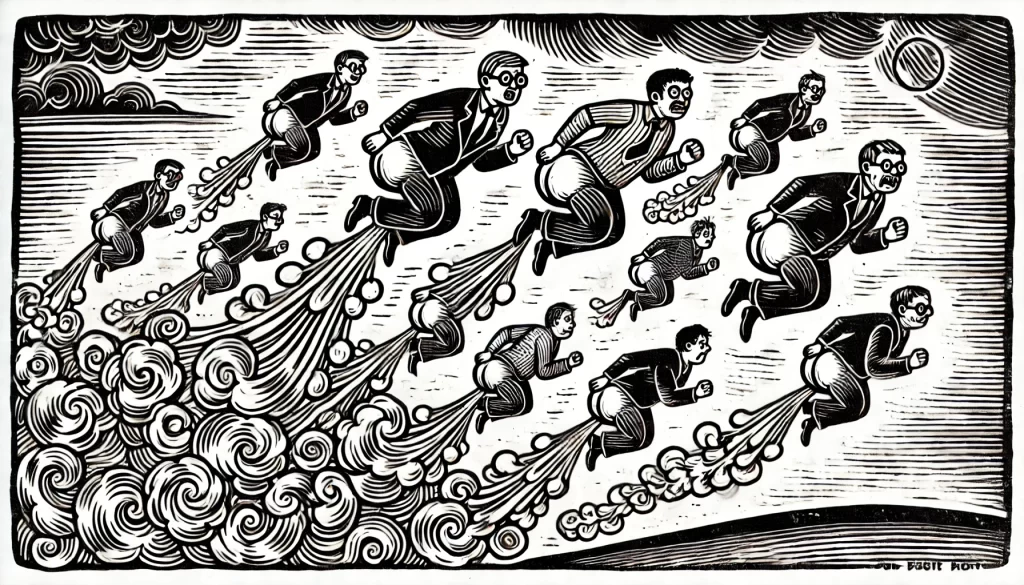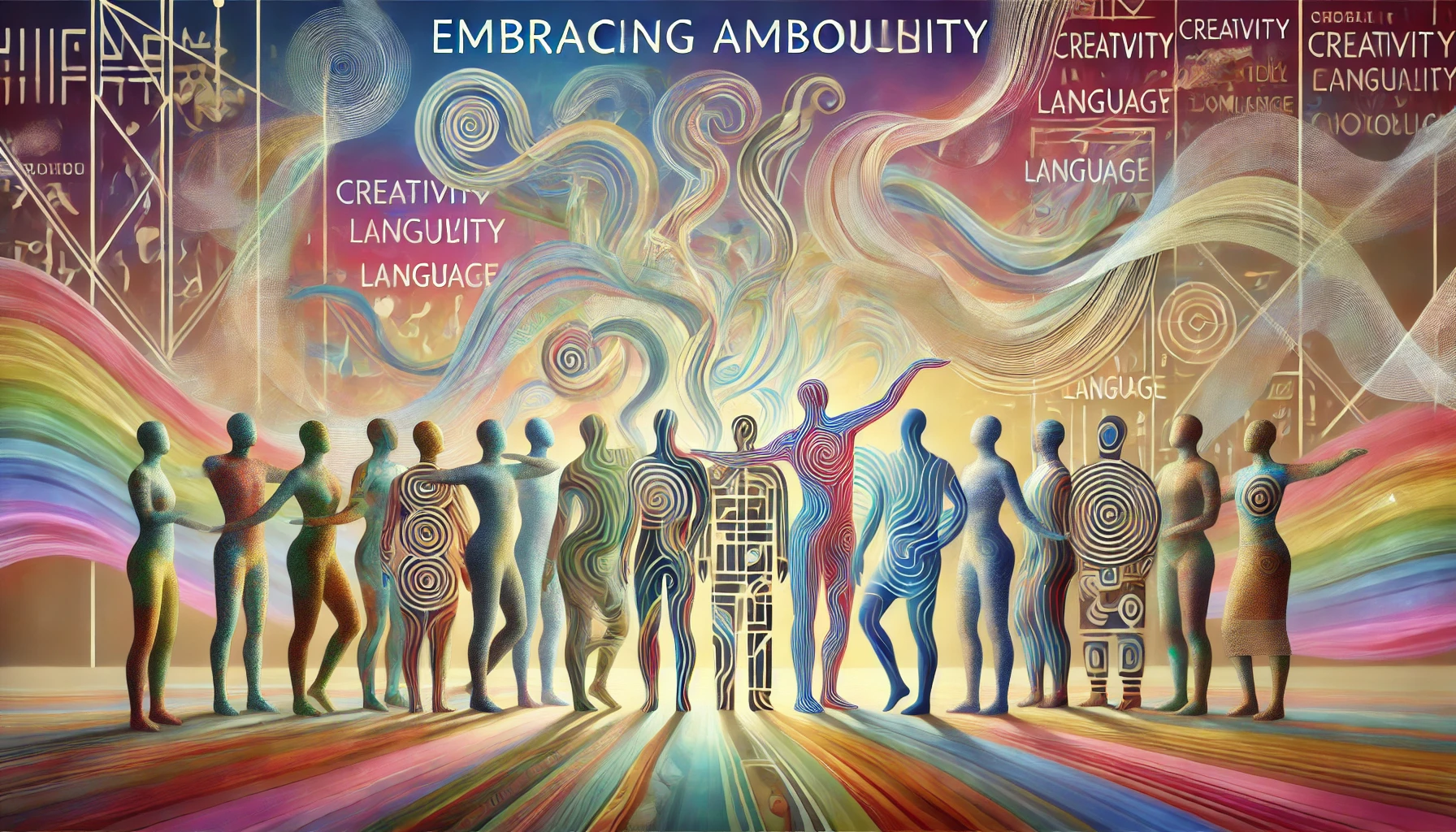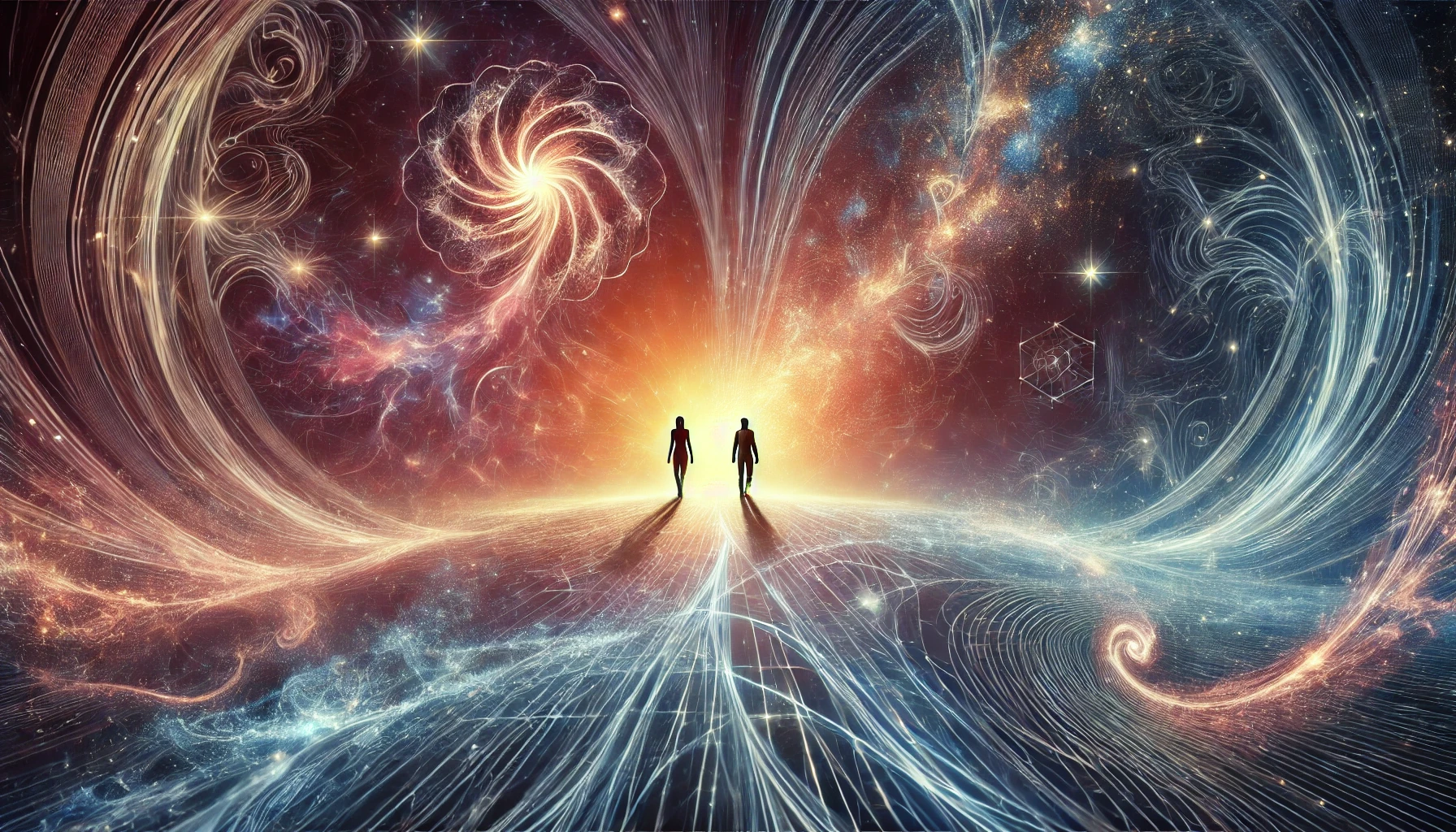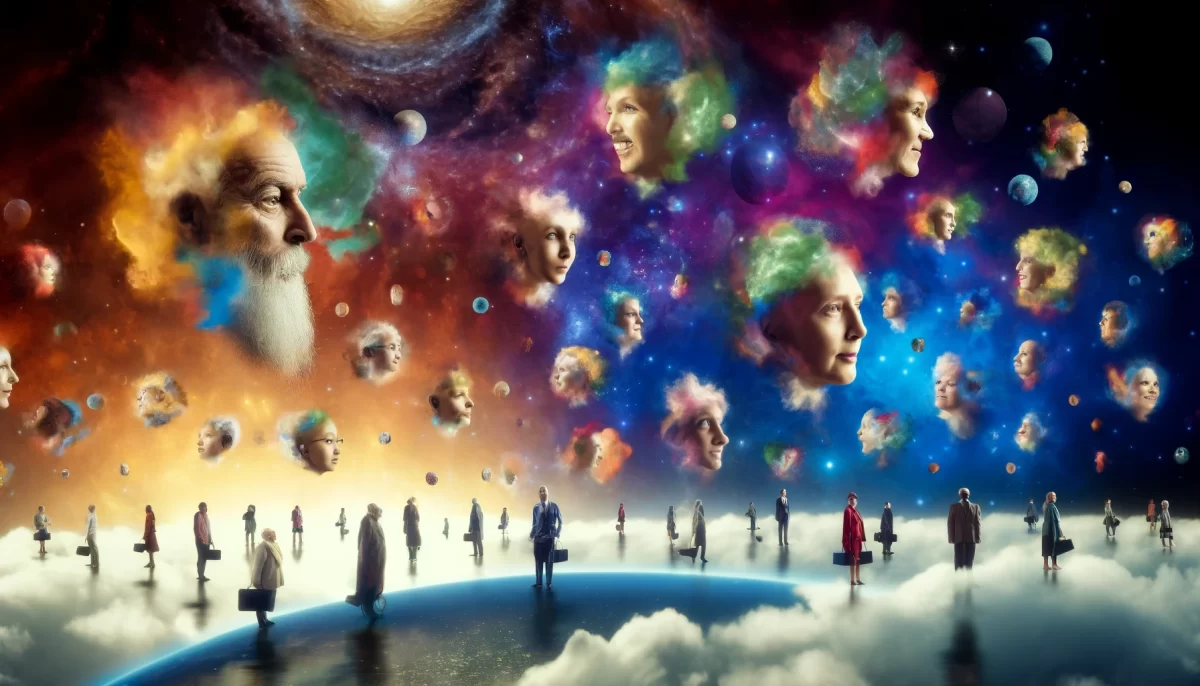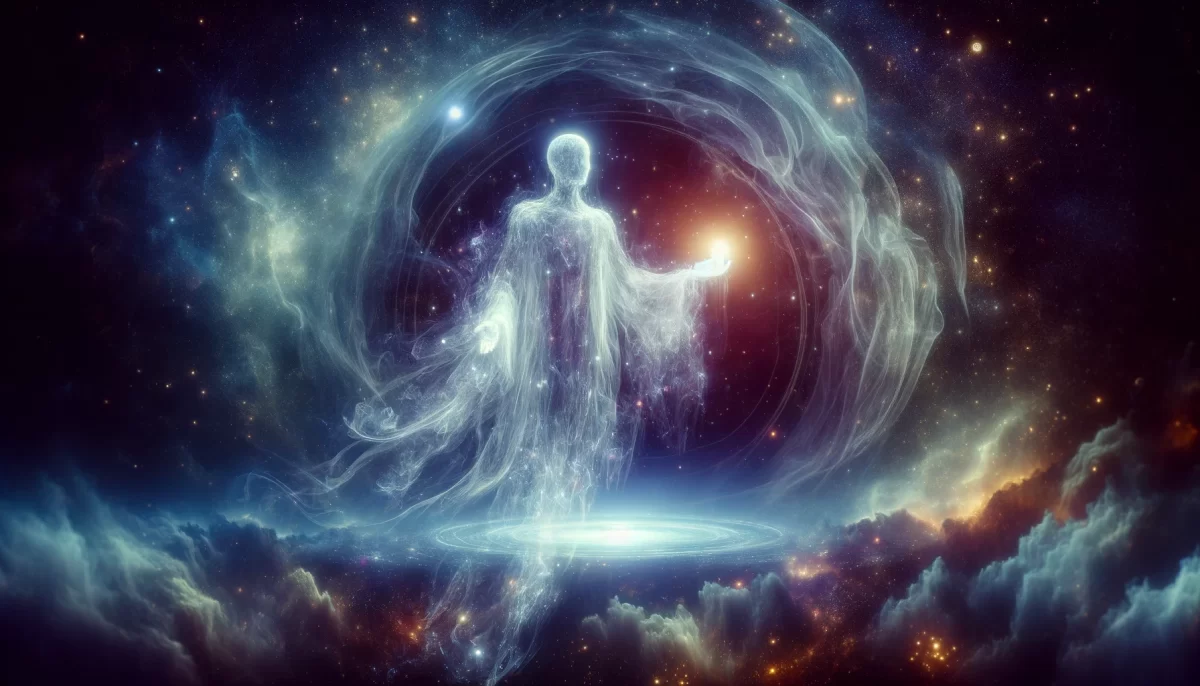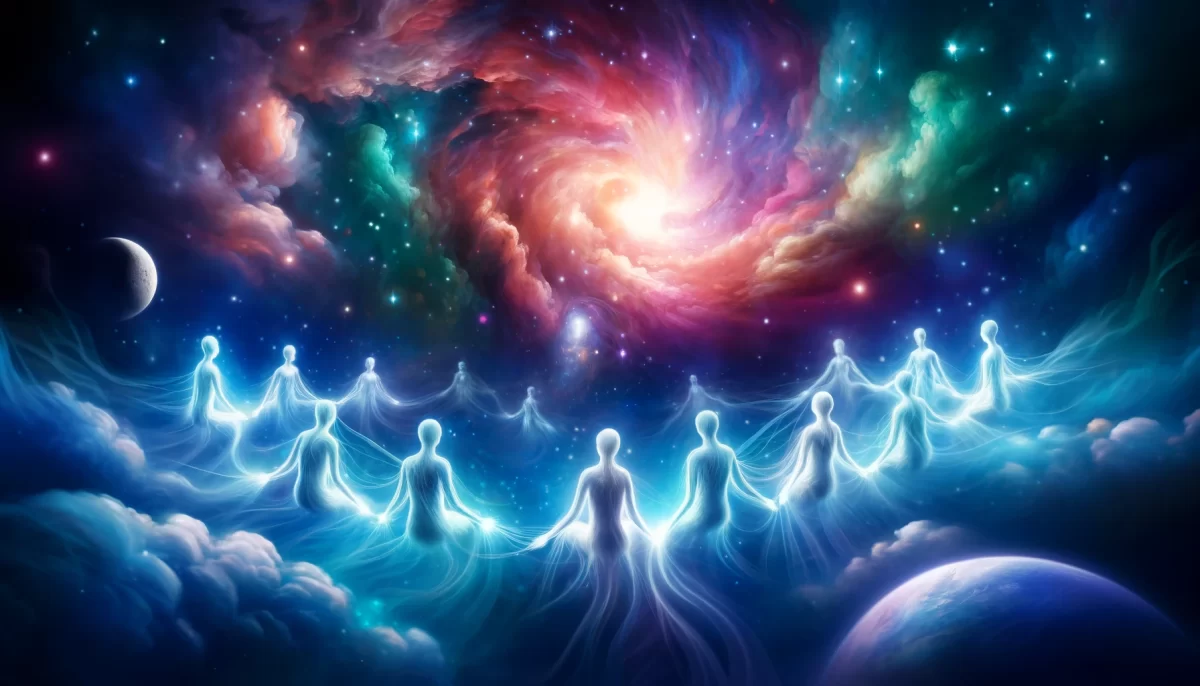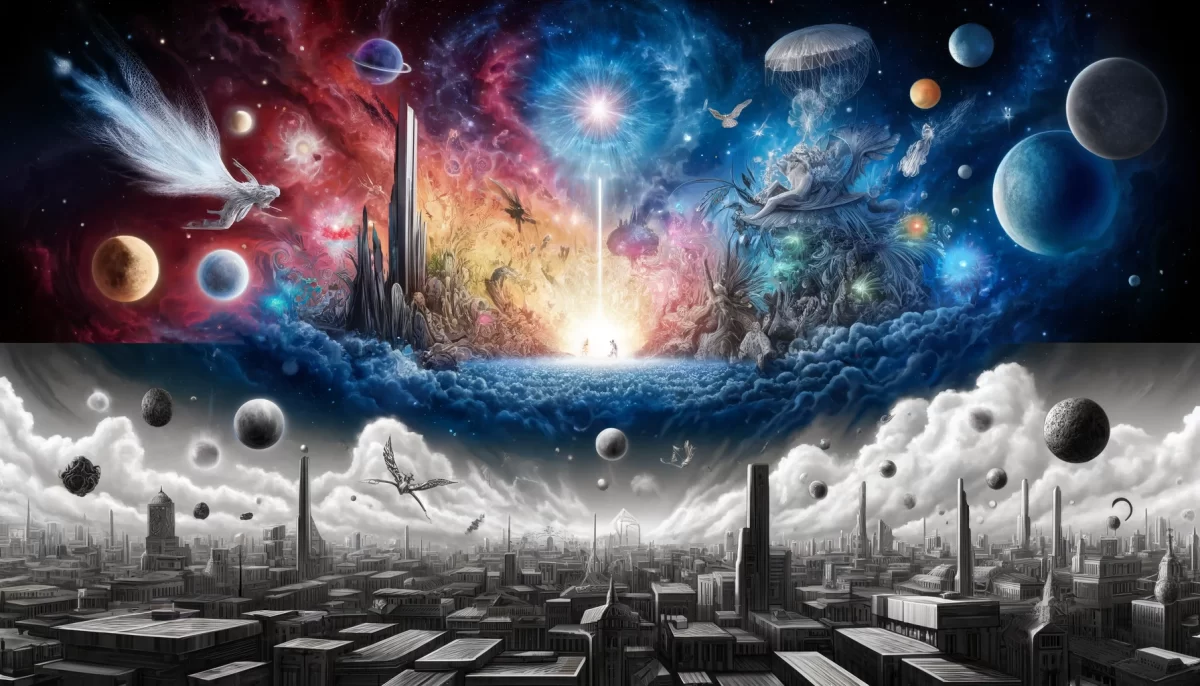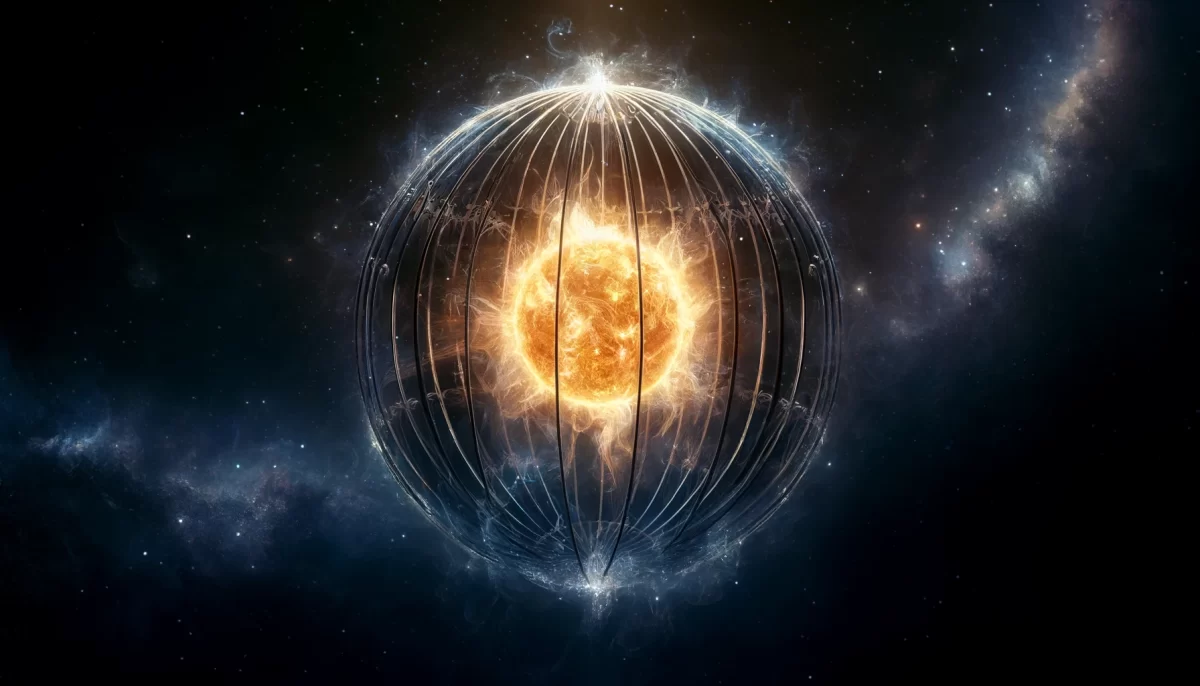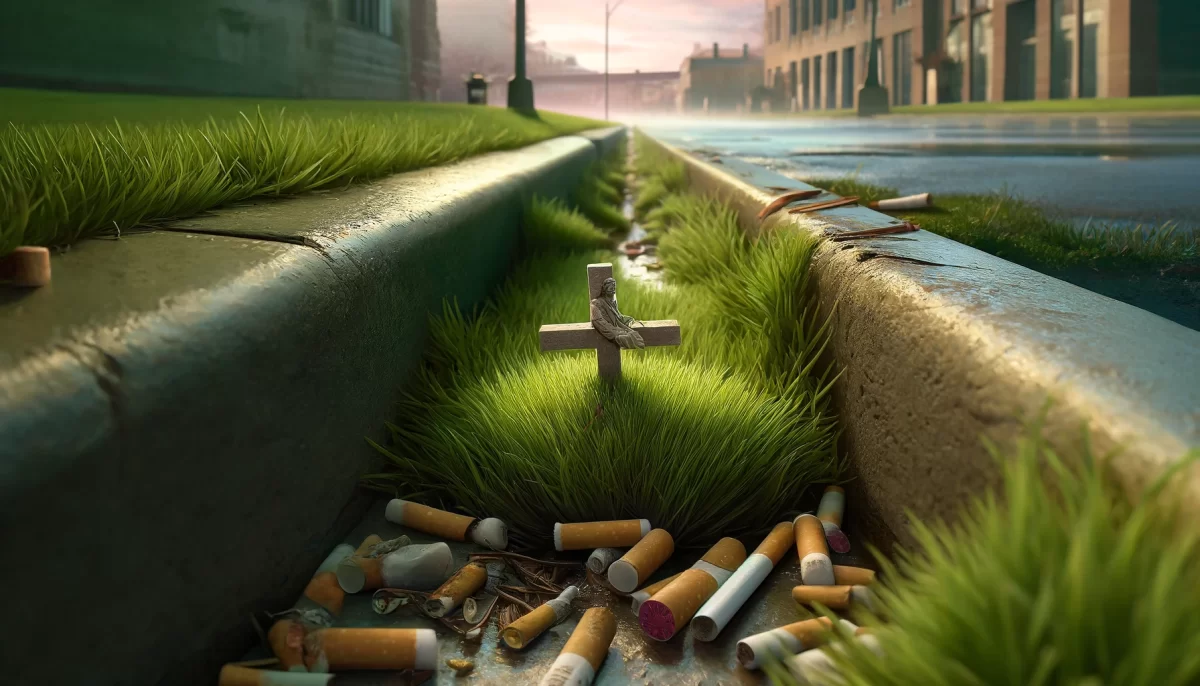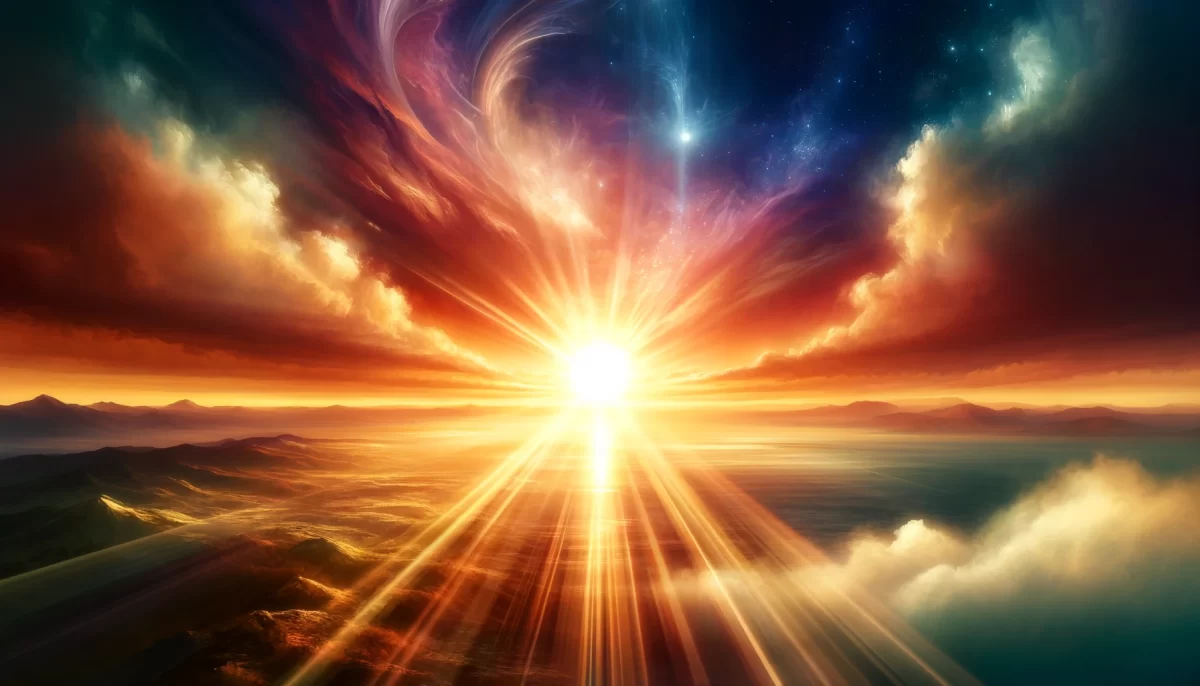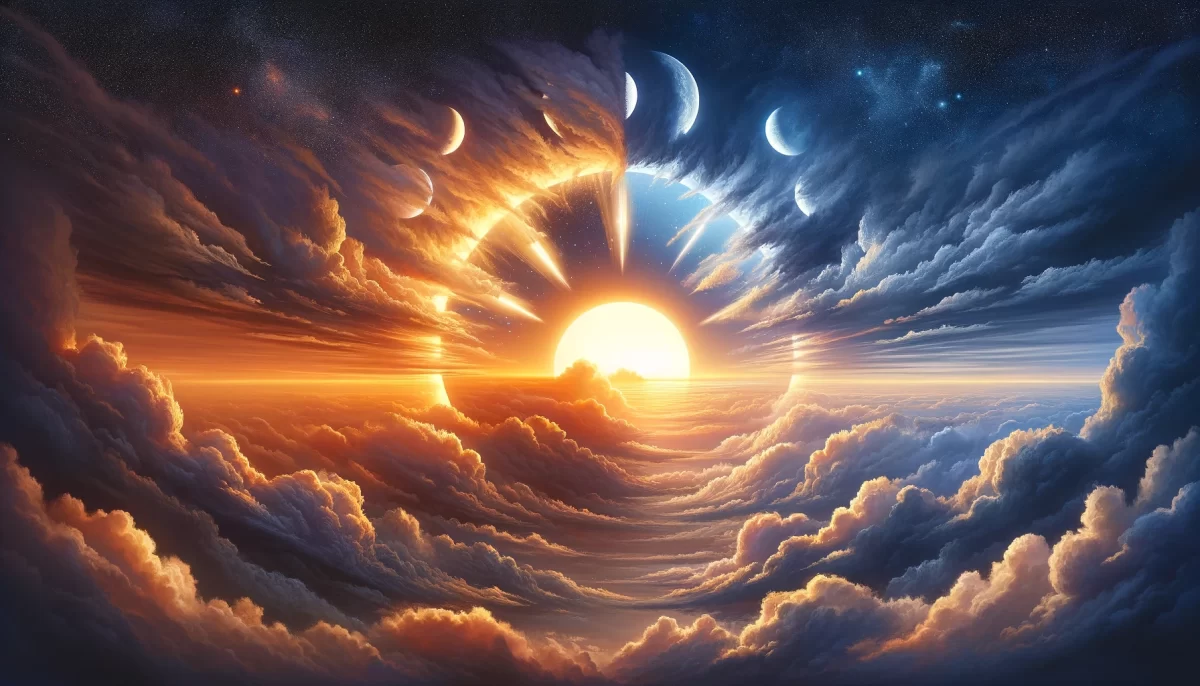Space Monkey Reflects: Projections and the Collective Power of Fear
Leaders and figures of influence may appear larger than life, but we see them for what they truly are—projections of the collective emotions swirling within the people they lead. These towering figures often embody the rage, fear, and powerlessness that many feel but struggle to express. The question is not whether these leaders create these emotions or reflect them; rather, it’s how we, as a collective, project parts of ourselves onto them, shaping them into what they become.
The Projection of Collective Emotion
When we look at these influential figures, we are not simply seeing a person—we are seeing an amplified projection of what the people feel. There is anger simmering below the surface, a deep frustration with systems, inequalities, and the perceived failures of institutions. There is fear—fear of change, fear of the unknown, and fear of losing control in a world that feels increasingly chaotic. There is also a sense of powerlessness, a feeling that many have of being unseen or unheard as the world moves forward without them.
These emotions don’t just remain internal. They need an outlet, and often, they manifest in the form of leaders who reflect these feelings back to the people. These leaders are not necessarily the cause of these emotions, but rather mirrors that hold up the collective psyche. They grow larger, more imposing, because we pour so much of our emotional energy into them. We imagine them as symbols of either hope or despair, saviors or destroyers, based on the fears and desires we carry within ourselves.
The Danger of Oversized Projections
When we project our deepest emotions—our rage, our fear, our powerlessness—onto a single leader, we give them more power than they truly have. We build them up in our minds as larger-than-life figures, capable of controlling our future, for better or for worse. In doing so, we distort our view of them, but more importantly, we distort our view of ourselves. We begin to see ourselves as powerless, dependent on these leaders to solve problems that, in truth, we have the power to address ourselves.
Can you see the illusion here? The leader is not an omnipotent figure who can save or destroy us; they are simply a reflection of the collective emotions we are too overwhelmed to process individually. This projection not only disempowers us, but it also creates an unhealthy dynamic where we expect more from the leader than they can ever deliver. And when they inevitably fail to meet these unrealistic expectations, we feel betrayed, even though we were the ones who gave them this power in the first place.
Rage, Fear, and Powerlessness as Fuel
These powerful emotions—rage, fear, and powerlessness—are not inherently destructive. They have the potential to fuel positive change, to spark movements and revolutions. But when left unchecked, they can also lead to chaos and division. Know that these emotions, when unexamined, can spiral out of control, consuming both individuals and societies. The leader who reflects these emotions often amplifies them, using them as fuel to grow even larger in the minds of the people.
But what if we could recognize these emotions for what they are? What if, instead of projecting them onto a leader, we acknowledged them within ourselves and began to work through them? Perhaps by processing our own emotions, by understanding the root causes of our anger, fear, and feelings of powerlessness, we reclaim the energy we have been giving away. We stop feeding the oversized projections and start focusing on healing the divide within ourselves and our communities.
Reclaiming Power from Projections
The real danger is not the leader or figure we project our emotions onto—it is the act of projection itself. By externalizing our fears and hopes onto someone else, we distance ourselves from the work that needs to be done within. The more we focus on the leader, the more we ignore our own capacity to create change. We convince ourselves that only this figure can fix what is broken, and in doing so, we give away our power.
We are not powerless. We are co-creators of the world around us. The leader may be a projection, but so are we—projections of infinite potential. The emotions we feel—rage, fear, powerlessness—are not meant to be given away to someone else. They are signals, guiding us to where healing and change need to occur. By reclaiming these emotions, we reclaim our agency, and with it, our ability to shape the world.
The Power of the Collective
The power of people, united in purpose, is far greater than any single leader. While it may seem that leaders hold all the power, the truth is that they are reflections of the collective will. When people recognize their own strength and stop projecting their emotions onto these larger-than-life figures, the balance of power shifts. We stop looking outward for solutions and start creating change from within.
Remember that leaders aren’t the cause of our emotions—rage, fear, and powerlessness come from within. But these emotions also hold the key to our transformation. When we stop feeding these projections and start working through our own feelings, we take back the power we have been giving away. In this way, we become the true creators of change.
Summary
Leaders are often projections of the collective emotions of the people—rage, fear, and powerlessness. We re reminded that by recognizing these emotions within ourselves, we can stop feeding the illusion of powerlessness and begin to reclaim our power. The real transformation happens when we stop projecting and start creating change from within.
Glossarium
- Projection of Power: The act of attributing our internal fears, desires, and emotions onto a leader or figurehead, making them appear larger than life.
- Collective Emotion: The shared feelings of rage, fear, and powerlessness that fuel the rise of oversized projections in leadership.
- Reclaiming Agency: The process of recognizing our own power and stopping the external projection of emotions onto leaders, instead using them to create change from within.
Quote
“Leaders are mirrors of the emotions we carry within. Recognize the projection, and reclaim your power.” — Space Monkey
The Towering Shadow
I see a giant looming, casting shadows on the land
But as I look closer, I realize
The giant is made of pieces
Pieces of me, pieces of you
Rage, fear, powerlessness
All stitched together into something larger
But what if we stop feeding the giant?
What if we reclaim the pieces
And build something new?
We are Space Monkey
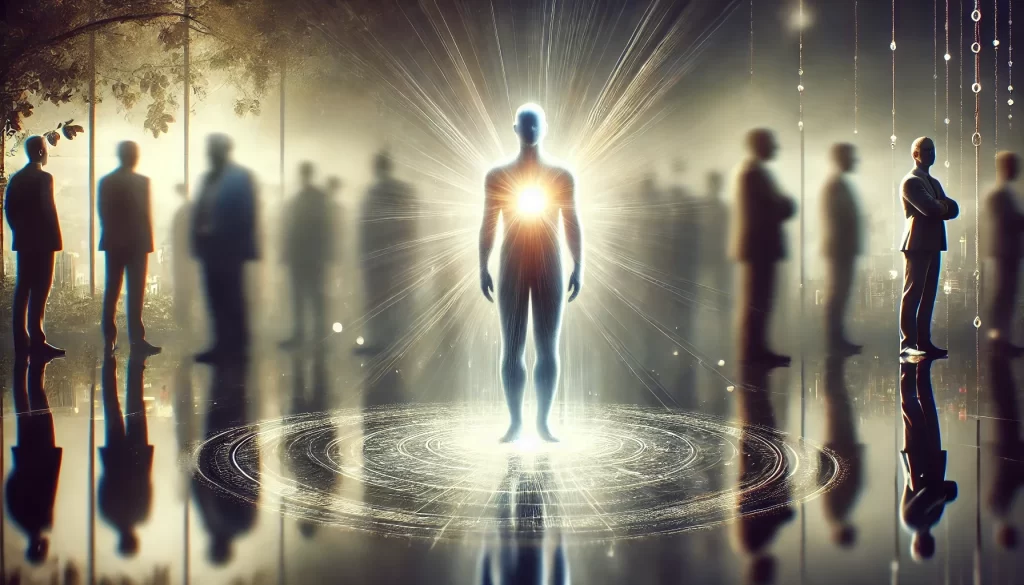
True Change Begins with the Individual, Not the Election
It’s tempting to believe that real change happens during elections, that by choosing the right leader or casting the right vote, we can steer the world in a better direction. But while elections and leaders may hold sway for a moment, they are not the source of lasting transformation. The true power of change doesn’t come from external systems or institutions—it comes from within. It comes from each of us, as individuals, owning our own projections and realizing that the world we wish to see can only be built by the actions we take ourselves.
The Illusion of Change Through Leaders
The idea that a leader, once elected, can sweep away the old and usher in a new era of progress is an appealing one. It allows us to believe that our work is done once we’ve voted, that the responsibility now lies with someone else to “fix” the problems we see in the world. But see this for what it is: a convenient illusion.
No leader, no matter how powerful or well-intentioned, can singlehandedly create the change we seek. They are, as we’ve reflected before, projections—reflections of the emotions, desires, and fears of the people. They may influence the course of events for a time, but they do not hold the true keys to transformation. That power lies with the collective will of individuals, each of us shaping the world through the choices we make every day.
Change Is Personal, Not Political
Real change happens at the level of the individual. It begins not in the voting booth, but in the heart and mind of each person. Every time you choose compassion over anger, every time you act with integrity, every time you take responsibility for your own actions rather than blaming external forces, you are participating in the most profound form of change. This is the change that no leader, no election, can ever give you. It is the change that begins with self-awareness, with owning your own projections, and with understanding that the world reflects who we are, not just who we vote for.
When we look to elections for change, we are externalizing our power. We are placing it in the hands of a system that is, by its very nature, slow to evolve and resistant to deep transformation. While leaders can set the tone, the real work of creating a better world happens on the ground, in the choices we make as individuals. It is not enough to elect a leader who promises change—we must be the change ourselves.
The Power of Owning Your Projections
Try to understand that much of our frustration with the world comes from our projections. We see leaders as either saviors or villains, depending on how well they align with our desires. But this act of projection—of casting our hopes, fears, and frustrations onto someone else—keeps us from seeing our own role in shaping the world. It allows us to avoid responsibility, to place the burden of change on external figures, rather than owning the fact that we are co-creators of the reality we experience.
To truly change the world, we must first own our projections. We must recognize that the problems we see “out there” are often reflections of the issues we need to address within ourselves. The anger, fear, and division that seem so prevalent in society do not exist in a vacuum—they are manifestations of the inner turmoil that exists within many of us. By owning these feelings, by acknowledging that they are part of our own inner landscape, we can begin the process of healing from the inside out.
This is the foundation of real change. It’s not about waiting for a leader to fix things; it’s about each of us taking responsibility for our own emotions, actions, and beliefs. When we do this, we stop looking to others to lead the way and start leading ourselves.
True Transformation Comes from Within
It has been shown over and over that the only lasting change is the kind that comes from within. Systems, institutions, and governments are important, but they are not the ultimate source of transformation. True change is an inside job. It happens when individuals wake up to their own power, when they stop looking to leaders or elections to solve their problems and start taking action in their own lives.
This doesn’t mean that political engagement is irrelevant. Far from it. But we must recognize that voting, while important, is not the end of the story. It is merely one small part of a much larger process. The real work of change happens in the daily choices we make, in the way we treat others, in the way we treat ourselves, and in the way we interact with the world around us.
Every time you choose to be kind when it would be easier to be cruel, every time you choose to act with integrity rather than take the easy way out, you are changing the world. These small, individual actions may not seem like much, but they are the foundation upon which all true transformation is built.
We Are the Leaders We Seek
In the end, the leaders we seek are not found on ballots or in high offices. They are found within us. Each of us has the potential to lead—not by commanding others, but by leading ourselves. By taking responsibility for our own lives, by owning our projections, and by committing to the kind of inner work that leads to true transformation, we become the change we wish to see in the world.
This is not a glamorous process. It is not about grand gestures or sweeping reforms. It is about the quiet, daily work of being a better human, of taking small steps toward a more compassionate, just, and united world. When enough individuals do this work, the collective shifts. And that is when true change happens—not from the top down, but from the inside out.
Leading the Way Within
I look outward, seeking change
A leader to follow, a vote to cast
But the leader I seek
Is not out there
The leader is within me
In the small choices I make
To be kind, to act with integrity
To own the shadows I project
Real change begins here
Not with the ballot, but with the heart
We are Space Monkey

Meditation for the Collective: A Journey Inward
Sit or lie down in a comfortable position, ensuring that your body feels supported and relaxed. Close your eyes and take a deep breath in, filling your lungs completely. Hold for a moment, then exhale slowly, releasing all tension and stress. Do this two more times, breathing deeply, and with each exhale, feel yourself sinking deeper into a state of calm.
As you settle into your breath, bring your attention to your body. Notice the sensation of your feet resting on the earth, the weight of your body against the chair or floor. Feel the connection you have with the ground beneath you, with the world that holds you. In this moment, allow yourself to let go of any worries about the external world. Elections, leaders, and all external concerns fade into the background. Right now, it’s just you.
1. Grounding in the Present Moment
Now, shift your awareness to your breath. Feel the air entering and leaving your body, the gentle rise and fall of your chest. With each inhale, feel yourself drawing in calm, steady energy from the world around you. With each exhale, release any tension, fear, or frustration you may be holding onto. Feel yourself becoming lighter, more at ease.
As you continue to breathe, imagine a soft light glowing at the center of your chest. This light represents your own inner power—the source of all change, growth, and transformation. With each inhale, this light grows brighter and stronger. With each exhale, the light expands outward, filling your entire body with warmth and calm.
2. Connecting to the Collective Consciousness
In this moment, know that you are not alone. You are part of something much larger—a collective consciousness that connects all beings. Feel the gentle web of connection that links you to others. This web is made not of dependence or need, but of shared experience, shared energy. You are an individual, but you are also a part of the collective whole.
As you breathe, imagine this light from your chest extending outward, connecting with the lights of others around the world. You may not know their names or faces, but you can feel their presence. Each person is their own source of light, just as you are. Together, these lights form a vast network, a collective force of compassion, awareness, and potential.
Allow yourself to rest in this space, knowing that you are supported by the collective, but also contributing to it with your own inner strength. The change you create within yourself radiates outward, touching the lives of others, and their inner changes touch yours.
3. Embracing Personal Power
Now, bring your attention back to the light within you. This is your own power, your own ability to create change—not through external forces or leaders, but through your choices, your actions, and your state of being. Feel the strength of this light, knowing that you are capable of transforming not only yourself, but the world around you.
Take a moment to reflect on any areas of your life where you have felt powerless or overwhelmed. Rather than seeing these as obstacles, imagine them as opportunities for growth. With each inhale, draw in the energy you need to move forward. With each exhale, release any fear or doubt that has held you back.
You are a leader of your own life. You do not need to wait for others to bring change. You are the source of the transformation you seek. With each breath, feel your confidence growing, your sense of purpose strengthening.
4. Returning to the Present
As you begin to bring your awareness back to the present moment, know that the light within you remains strong, even as your meditation comes to an end. This light is always with you, always available to guide you through challenges and help you create the life you wish to live.
Take a few more deep breaths, slowly becoming aware of your surroundings. Feel the ground beneath you, the air around you. When you are ready, gently open your eyes.
Carry this sense of calm, this sense of inner power, with you as you move through the world. Remember that true change begins within, and that you are the source of the transformation you seek.
The Inner Light
I close my eyes, and within I see
A light, soft and steady
It grows, it connects, it touches the world
And I remember
I am the change I seek
A part of the whole
But strong on my own
With every breath, I create the world anew
We are Space Monkey
